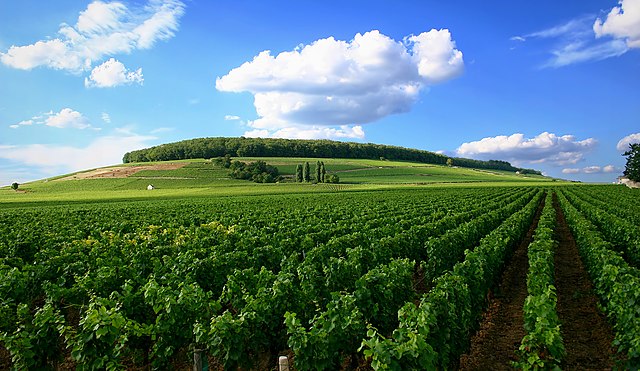Italian wine is produced in every region of Italy. Italy is the world's largest wine producer, as well as the country with the widest variety of indigenous grapevine in the world, with an area of 702,000 hectares under vineyard cultivation, and contributing a 2013–2017 annual average of 48.3 million hl of wine. In 2018 Italy accounted for 19 per cent of global production, ahead of France and Spain. Italian wine is both exported around the world and popular domestically among Italians, who consume an average of 42 litres per capita, ranking fifth in world wine consumption.
Tuscan Chianti in a traditional fiasco
Vineyards in Langhe and Montferrat, Piedmont, the official name of a UNESCO World Heritage Site comprising "five distinct wine-growing areas with outstanding landscapes" and the Castle of Grinzane Cavour in the region of Piedmont, Italy
A typical Italian vineyard scene, with vines growing alongside olive trees
DOCG and DOC labels on two Italian wine bottles
French wine is produced all throughout France, in quantities between 50 and 60 million hectolitres per year, or 7–8 billion bottles. France is one of the largest wine producers in the world, along with Italian, Spanish, and American wine-producing regions. French wine traces its history to the 6th century BCE, with many of France's regions dating their wine-making history to Roman times. The wines produced range from expensive wines sold internationally to modest wines usually only seen within France such as the Margnat wines of the post-war period.
French wines are usually made to accompany food.
Vineyards in Vosne-Romanée in Burgundy, a village that is the source of some of France's most expensive wines
Château Pichon Longueville Baron in Pauillac corresponds well to the traditional image of a prestigious French château, but in reality, French wineries come in all sizes and shapes.
Vineyard in Côte de Beaune, Burgundy








